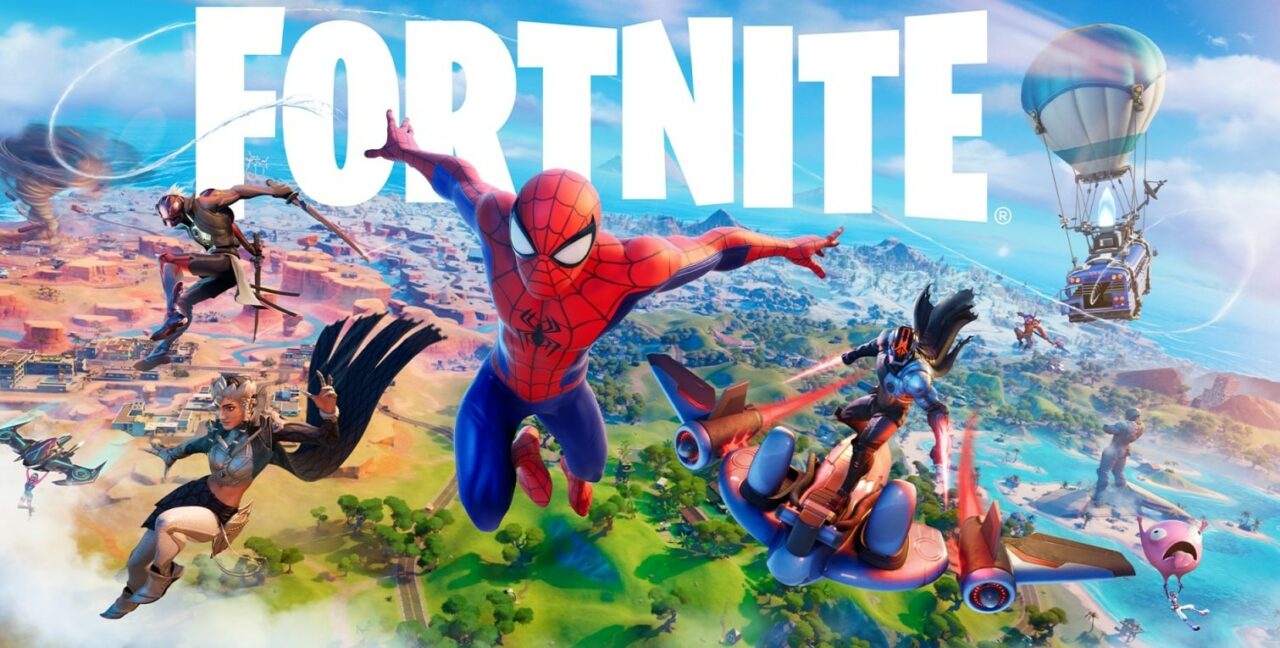The very popular Battle Royale game Fornite, released in 2019, manages to entertain its fans in a competitive environment with its Arena mode. Players compete against each other in a professional gaming environment and showcase their skills. The Fortnite ranking system is easier than you think, and it has very exciting facts.
If you want to play Fortnite Arena mode, there are a few critical details you need to know. We do not recommend you play Arena mode without learning what the ranks are, are there any specific features specific to the Arena mode and how the point system works.
In Chapter 1 Season 7, Epic Games launched Arena Mode, allowing eager gamers to dip their toes into the competitive Fortnite world. Players that wished to put their building, shooting, editing, and rotating skills to the test against opponents in their allocated region turned to the Arena mode.
Fortnite’s competitive Arena has undergone many changes over time, but it still has the same core features in the finale. Arena Mode was eventually introduced as a new playlist focused primarily at competitive players by the developers. In this article, we will tell you everything you need to know about the Fortnite ranking system, so you can grind your rank easily in Fortnite.
What is Arena Mode?
Arena mode is simply Fortnite’s ranked mode. In this mode, players compete with each other in a more serious and focused way and try to rise. As with every other game’s ranking system, the more games you win in the Fortnite competitive arena, the faster and easier you rank. For this, you need to know some content specific to this mode.
Players may now grasp Storm Surge, Siphon, and moving zones, which are only available in competitive Fortnite. Arena Mode also gives players access to higher-level events such as Cash Cups and the game’s main event, the Fortnite Champion Series (FNCS). To earn these rewards, players must move through a ranking system in Fortnite.
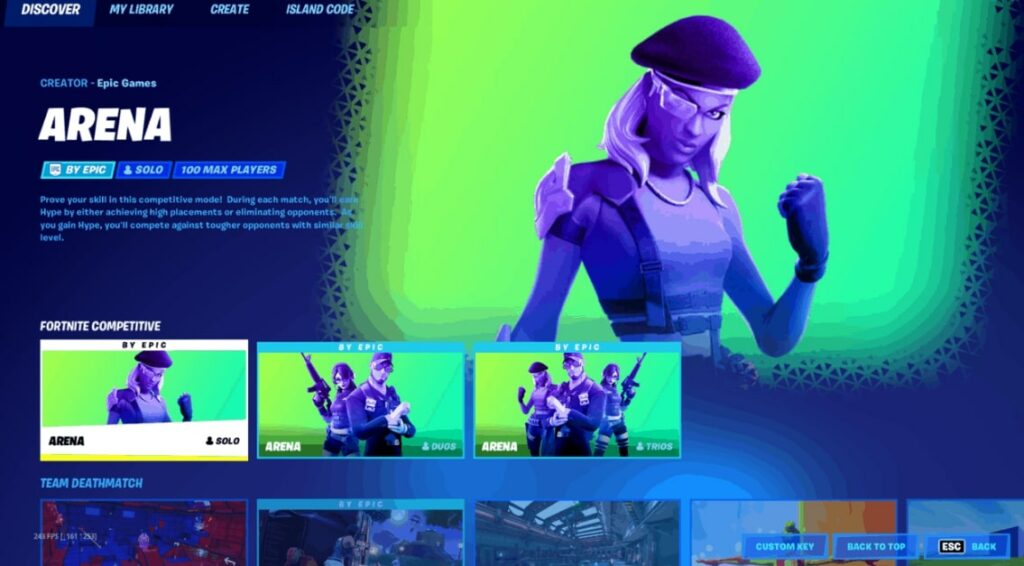
In Arena mode, each player has a rank that reveals themselves. This rank represents many elements such as how good you are at the game, how high your win rate is, and your professionalism. When you play in Arena mode, you will be matched with players of your own level, so players better or worse than you will not coincide with your match.
Anyone who starts playing Arena mode starts in Open League, Division One. They can earn Hype points depending on the number of eliminations they receive and their placing in each match to qualify to Division 10, which is the Champion Division III. Players can advance to the next tier or league after earning a particular number of Hype points in numerous matches. We will talk about this in more detail in the next section.
What are the Fornite Ranks?
There are mainly three leagues in Arena Mode – Open, Contender and Champion. Players first start playing in Open League and try to rise or fall by gaining points over time. In order to rise in rank, they must collect points called “Hype” and catch a win-streak. These points are determined by the eliminations and placement received throughout the game.
Also, the ranking system in Fortnite is not limited to this. Yes, we said that there are 3 ranks in total in the game. These;
- Open League
- Contender League
- Champion League
But, these are also divided into three among themselves; Solo, Duos and Trios. Each takes place in a competitive environment, which means that, unlike Events and Tournaments, participants can always join in. Aside from Solo mode, Duos and Trios appear and disappear with each season. The rotations are mostly determined by the larger events that Epic intends to launch later in the season.
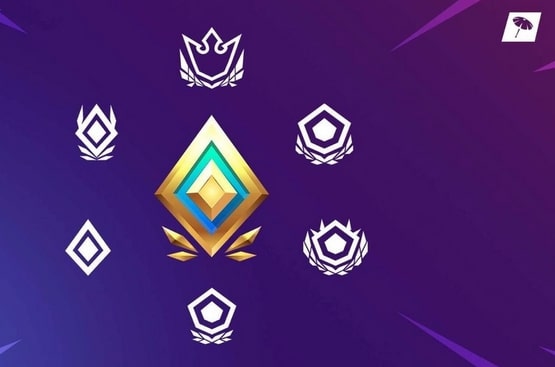
Every player wants to play with players in their own classification. For example, if you see yourself as belonging to the Contender League Division II rank, being in the same game with a Champion League Division II player can make it difficult for you. That’s why the ranking system in Fornite is very helpful in adjusting your competitors to you.
Fortnite Divisions
As we said before, you earn “Hype” points at each end of the game based on your performance in a game. By increasing these points, you rank up to the next division. This is actually pretty simple. All you have to do is win as many games as you can.
Fortnite currently has 10 divisions in total, which are divided into three for each mode (Solo, Duo, Trio).
Here are the details of all divisions for Fortnite ranking system:
(Remember that all of the stages are same in Solo, Duo and Trio modes)
Stage 1:
- Open League: Division I (0 – 249 Hype)
- Open League: Division II (250 – 499 Hype)
- Open League: Division III (500 – 999 Hype)
- Open League: Division IV (1,000 – 1,499 Hype)
Stage 2:
- Contender League: Division I (1,500 – 2,499 Hype)
- Contender League: Division II (2,500 – 3,999 Hype)
- Contender League: Division III (4,000 – 5,999 Hype)
Stage 3:
- Champion League: Division I (6,000 – 11,999 Hype)
- Champion League: Division II (12,000 – 15,999 Hype)
- Champion League: Division III (16,000+ Hype)
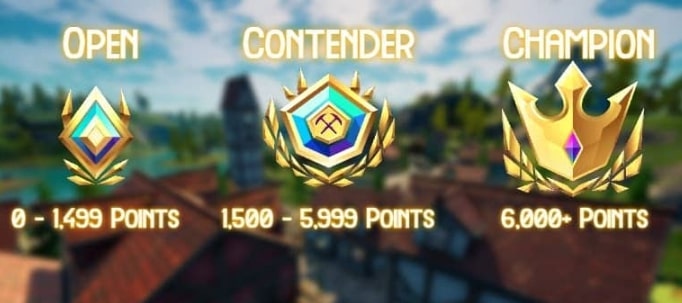
Once a player reaches a particular Hype level in their current Division, their Division will be increased. The number of Hype points a player receives in each game is determined on their placements and overall kill score and placement of that match.
Players usually play in the Open League, but there are many players who manage to reach the Contender League. The Champion League is the hardest rank to reach because it requires a lot of Hype points and there are more intense players.
To get out of the Open Leagues, players must acquire above 1,499 Hype points. If you want to reach the next rank from Contender League, to Champion League, you must pass the 5,999 points threshold. According to the ranking system in Fortnite, you can reach the most Champion League: Division III, which means 16,000+ Hype points.
People playing in the Champion League are usually top eSports players. If you are a huge follower of the Fortnite tournaments, you can bet right here.
How to Earn Hype Points in Fortnite?
Hype is a ranking points tool used to determine your rank in Fortnite. When playing in Open League (until 3), you can play your matches for free, but when playing in Contender League and Champion Leagues that are higher ranks than this, you use a point spend system known as Bus Fare.
However, you gain Hype points based on your performance and winning in the game. At the same time, since the kills you get in the game affect Hype points, even if you have a bad placement, even if you have not had a bad game, the Hype points you will receive will be determined accordingly.
Things are clear in Fortnite compared to ranking systems in other games. There are many different rank calculation methods known as “hidden elo and MMR” in games such as League of Legends, Dota 2, Valorant. But in Fortnite, you can clearly see what points you gain and what you lose, and this is very useful for you to improve yourself and spot mistakes.
What is Bus Fare?
As we said above, Bus Fare is a fee paid before entering an Arena match. You only pay this fee after Open League Division 3. So if you’re in a lower division than that, you can play your Arena matches without paying an entry fee.
This Bus Fare fee increases as the ranks progress. In the last tier, the Champion League Division, the cost increases up to a maximum of -70. In other words, as the rank increases, the amount you have to pay increases, which proves why it is so difficult to progress in high ranks.
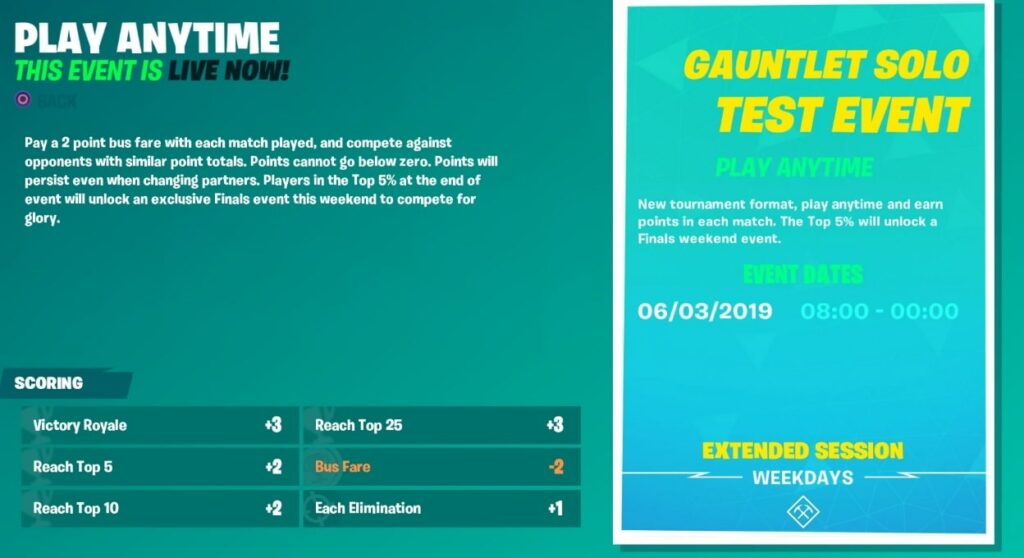
This also means that, if a player buys the Bus Fare but does not score points in that match, they will lose Hype equivalent to the Bus Fare when the match is finished. Despite the fact that a player cannot be demoted from one rank to another, the Bus Fare fee is an excellent tool to guarantee that everyone is on their game.
Here is the Bus Fare you have to pay according to the ranks:
| Rank | Fee |
| Open League Division 1 | Free |
| Open League Division 2 | Free |
| Open League Division 3 | Free |
| Open League Division 4 | -10 |
| Rank | Fee |
| Contender League 1 | -20 |
| Contender League 2 | -30 |
| Contender League 3 | -40 |
| Rank | Fee |
| Champion League 1 | -60 |
| Champion League 2 | -60 |
| Champion League 3 | -70 |
Fortnite Arena Mode Special Contents
There are several different types of content in Fortnite that separate the regular game from the Arena mode. These are just a few features used to make the mode both more challenging and more unique. Some are exclusive to Arena mode, while others are modified versions of normal game content.
- Storm Surge
The first content we want to talk about that makes the competitive arena different from regular games is Storm Surge, a mod designed to encourage fights and counter passive play. During each game in Arena Mode, players must deliver enough damage to stay over a particular threshold in order to cover themselves.
Those who fall below the Storm Surge threshold will take 25 damage every ten seconds until they can deliver more damage or the lobby reaches a certain number of players. If the match meets all of the pre-requisites, Storm Surge begins in the third zone.
This mechanic is only used in Tournament lobbies with large numbers of players. Storm Surge player counts are as follows:
- Third Zone: 70 players left
- Fifth Zone: 50 players left
- All Remaining Zones: 30 players left
- The Siphon
Health and shields are based on different mechanics and structures in Arena matches compared to normal matches. This mechanic in Arena matches is called Siphon. Each time you eliminate an enemy, you gain a healing bonus that fuels you and makes you aggressive.
Healing bonus and shield capped with 50 HP. If you have more than 50 percent health, this will allow you to get the rest as shields. Thanks to the Siphon, you prefer to engage in active battles rather than stacking healing items.
Siphon is only playable in Siphon Limited-Time Mode (LTM) and Arena. Usually, this trait comes in handy when you don’t have a healer in your duo or trio games. We can also call it a life-exploitation, but remember that you can’t get a healing bonus without eliminating the opponent.
Sometimes this trait can have both good and bad results. Because veterans are accustomed to calculating how much damage is required to accomplish a kill. You never know when a player you thought was dead would acquire health and finish you out in return.
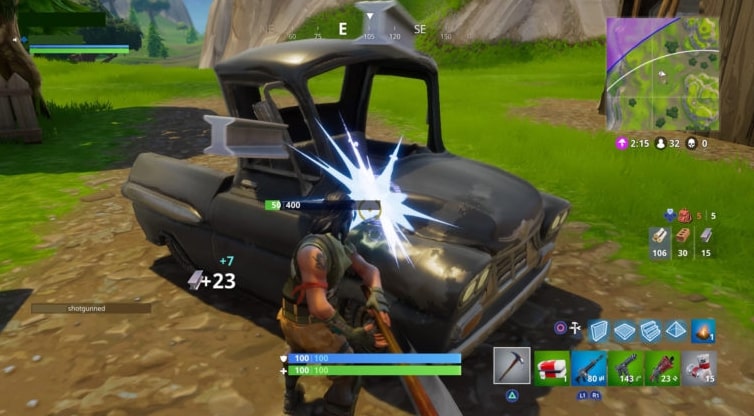
- Material Cap
Another change made in Arena mode is the material restrictions, so that you can play the game more aggressively and faster, such as the Health bonus. You already know how reflexive and important building is in Fortnite. But did you know that the limit of this is different from the normal game in Arena mode?
In normal Fortnite games, material cap is; 999 for wood, brick and metal. But that’s not how things work in Arena mode. You are able to carry 500 materials for all 3 types of materials in the game. That is to say, 1500 in total; You can carry 500 metal, 500 wood and 500 bricks.
After eliminating enemies, it is very important to loot them. Especially if they have a valuable number of materials on them. But to make things a little harder, you can carry less per item in Arena mode. In this way, when you’re short on material, you can overthrow them by surprise.
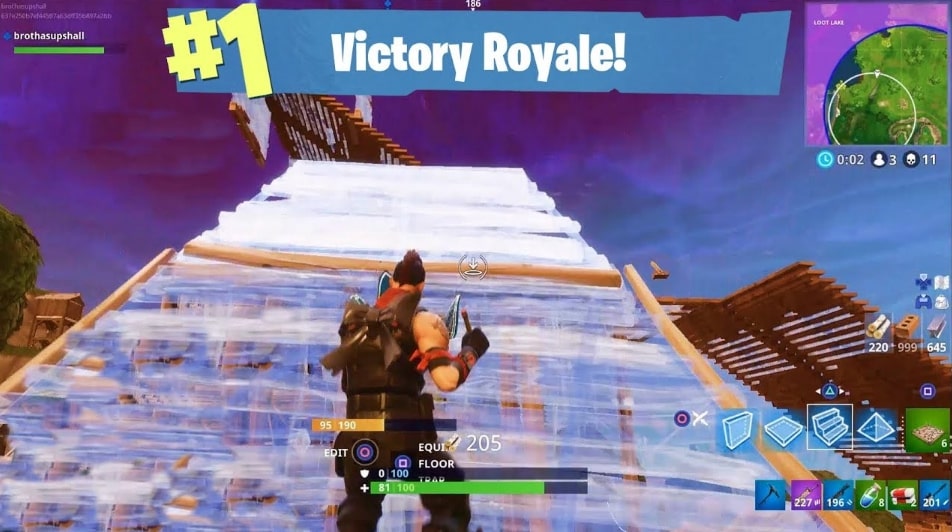
- Moving Zones
After the fourth round, moving storm zones appear in Fortnite Arena mode. Players will observe that zone five advances into the storm as the map is shown. As time passes, the zone will begin to move, forcing contestants to remain ahead of the storm while avoiding damage.
The storm causes 10 damage every second at this point in the game. The game will continue to move zones until all players have fallen or zone nine has closed. There is no escape the storm once the ninth zone shuts, and battles frequently come down to a heal case. That means with the player with the most healing items winning.
Want to make good use of your Fortnite knowledge?
Visit Thunderpick Fortnite Betting Site and let your skills and expertise earn some cash for you!

